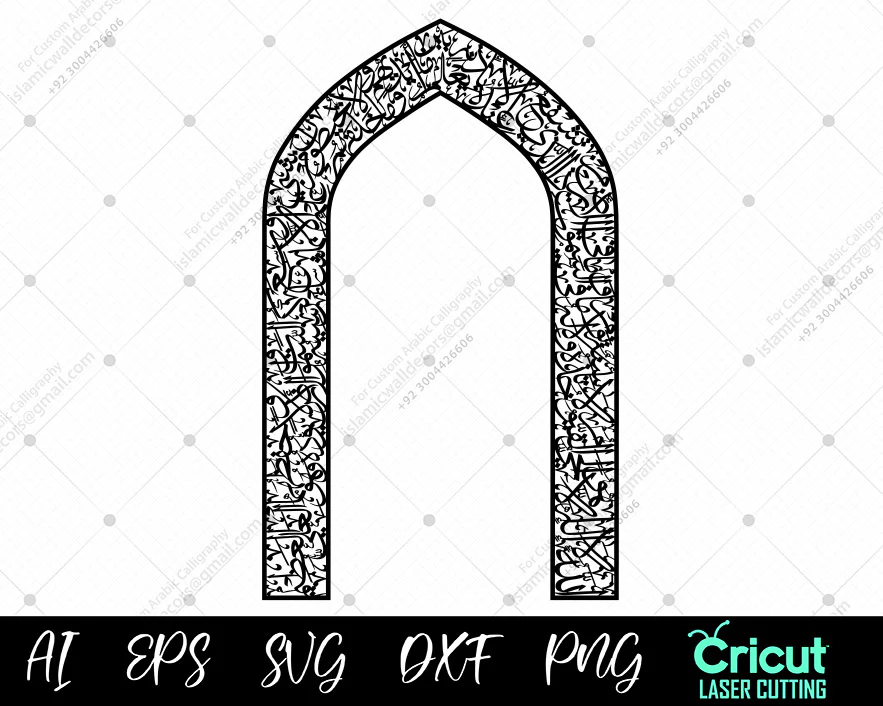The History of Ayatul Kursi Calligraphy in Islamic Art

Ayatul Kursi calligraphy
The story of Ayatul Kursi calligraphy in Islamic art is a beautiful journey that begins not with ink and paper, but with revelation and devotion. This powerful verse, revealed to the Prophet Muhammad (peace be upon him), was cherished from the very start for its profound description of God’s majesty and protection. Its deep meaning made it a natural favorite for recitation, but its journey into physical art form was a gradual one, born from a desire to honor the divine word by making it visually magnificent. This was the seed from which centuries of artistic tradition would grow.
The Humble Beginnings: From Parchment to Architecture
In the early days of Islam, the primary focus was on memorizing and reciting the Quran. Writing it down was a careful and respectful act. The first calligraphers used a simple, clear script known as Kufic. You can imagine these early versions of Ayatul Kursi calligraphy, with their strong, angular letters and minimal decoration, written on parchment.
Soon, its words moved from the page onto the walls of mosques and palaces. Artists and builders inscribed it onto friezes, domes, and gateways, turning architecture into a declaration of faith. This wasn’t just decoration; it was a way to surround communities with a constant reminder of divine protection and power.
The Rise of a Royal Art: Calligraphy Blossoms
As the Islamic empire grew, so did the importance of calligraphy. It became the highest form of art. Skilled calligraphers were highly respected, almost like royal celebrities. During this golden age, master calligraphers developed new, more flowing scripts like Naskh and Thuluth.
These styles were more elegant and curvilinear, perfect for capturing the spiritual flow of Ayatul Kursi calligraphy.
The verse was now being written with incredible grace and rhythm, each line and curve carefully measured to create a sense of harmony and beauty that matched the majesty of the words themselves.
More Than Just Words: An Explosion of Color and Gold
This era saw calligraphy become the centerpiece of an entire decorative universe. Ayatul Kursi calligraphy was no longer just black ink on a white page. Artists began to illuminate the verse, surrounding it with breathtaking patterns and colors.
Imagine the text written in deep black ink, but then enveloped by swirling vines of gold leaf, intricate floral designs, and geometric patterns that seemed to go on forever. These weren’t just random decorations; the gold symbolized divine light, the patterns reflected the infinite complexity of creation, and the whole composition was designed to lift the viewer’s mind and heart from the physical text to the spiritual realm.
A Personal Treasure: The Verse in Daily Life
The love for Ayatul Kursi calligraphy wasn’t confined to grand mosques and royal books. It also found its way into the hearts and homes of everyday people. Artisans began inscribing the verse on items used in daily life.
You would find it beautifully written on ceramic plates, woven into precious textiles, and carefully engraved on metalwork like brass lamps and incense burners. This practice transformed ordinary objects into sources of blessing (barakah). It was a way for people to carry the verse’s protective and peaceful meaning with them, integrating faith into every aspect of their existence, from lighting a room to sharing a meal.
The Story Continues: Ayatul Kursi in Our Modern World
The artistic journey of Ayatul Kursi did not end in the past. Today, this rich history continues to inspire artists around the globe. While the traditional masters with their reed pens and gold leaf are still revered, new tools have emerged. Now, you can find Ayatul Kursi calligraphy rendered in stunning digital calligraphy, elegant vector art, and modern abstract interpretations.
Contemporary artists honor the old rules of classical scripts while also finding new ways to express its timeless message. This beautiful bridge between the ancient and the modern ensures that the verse continues to speak to new generations, proving that its power to inspire beauty is as eternal as the words themselves.





